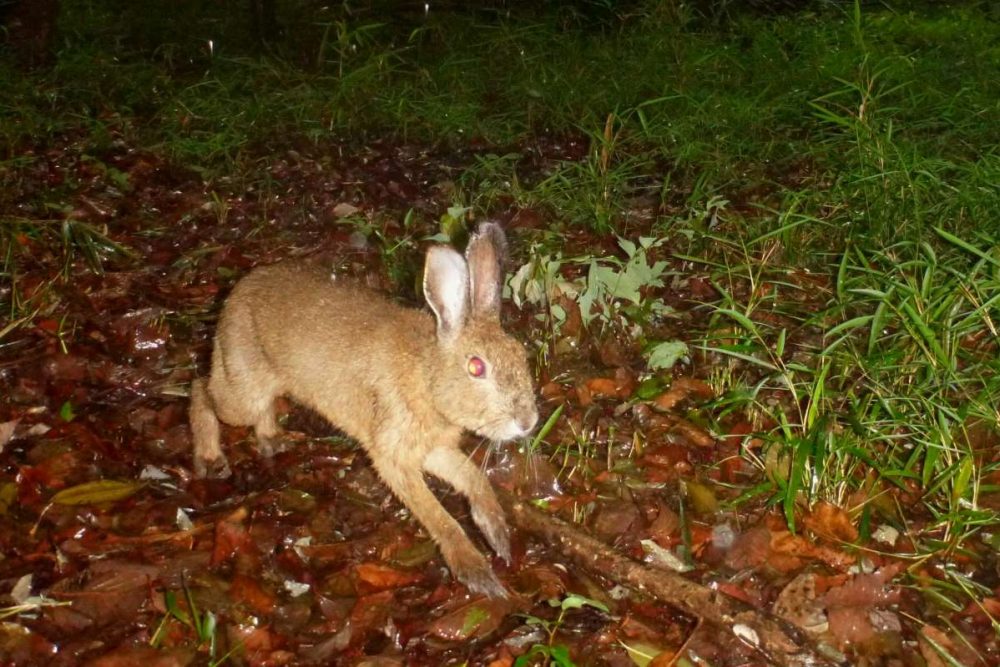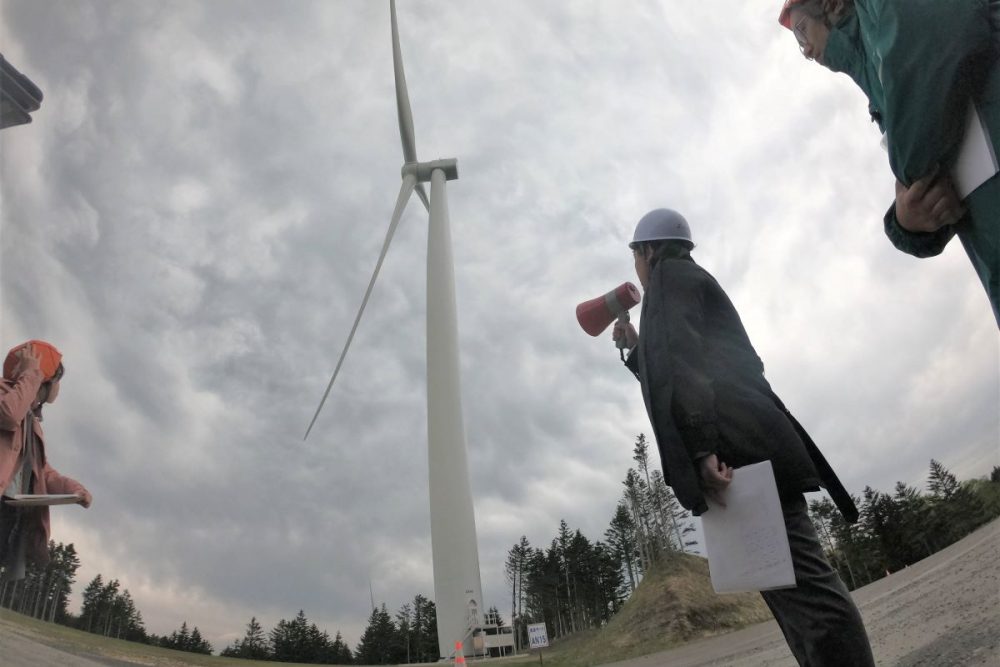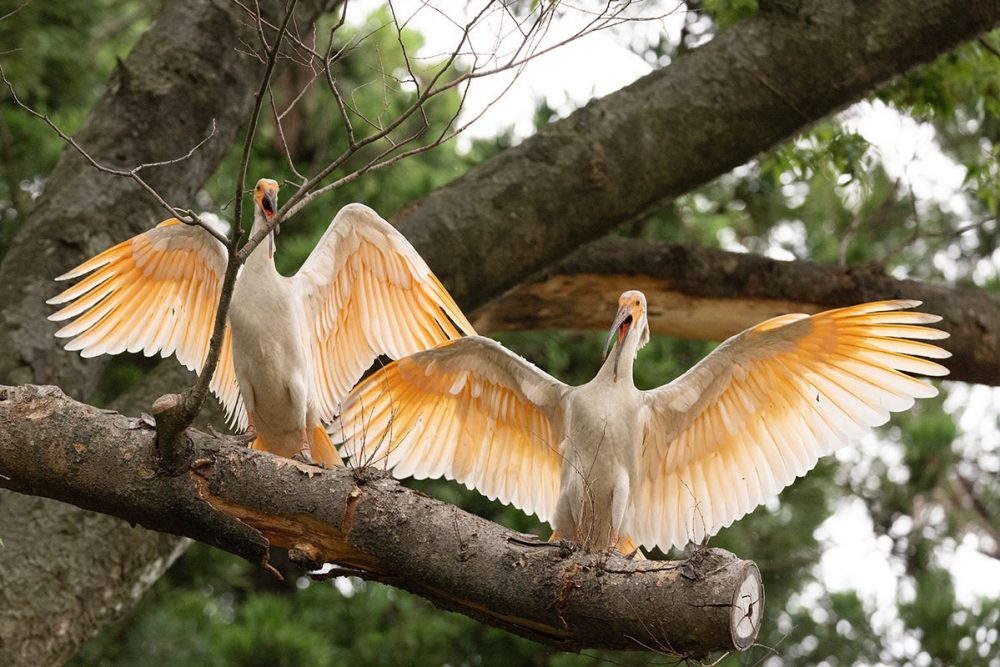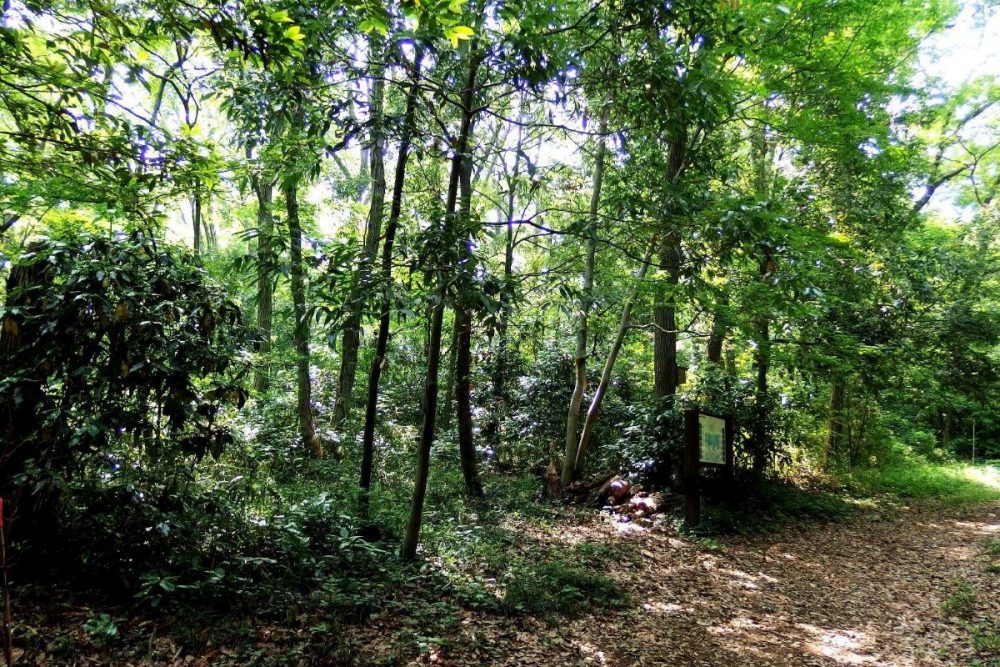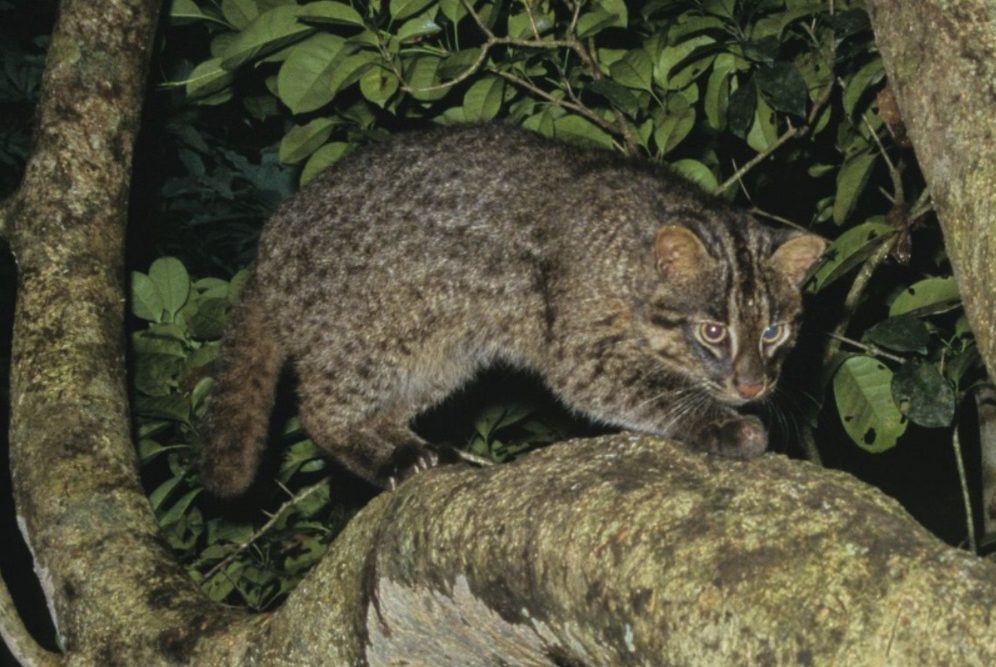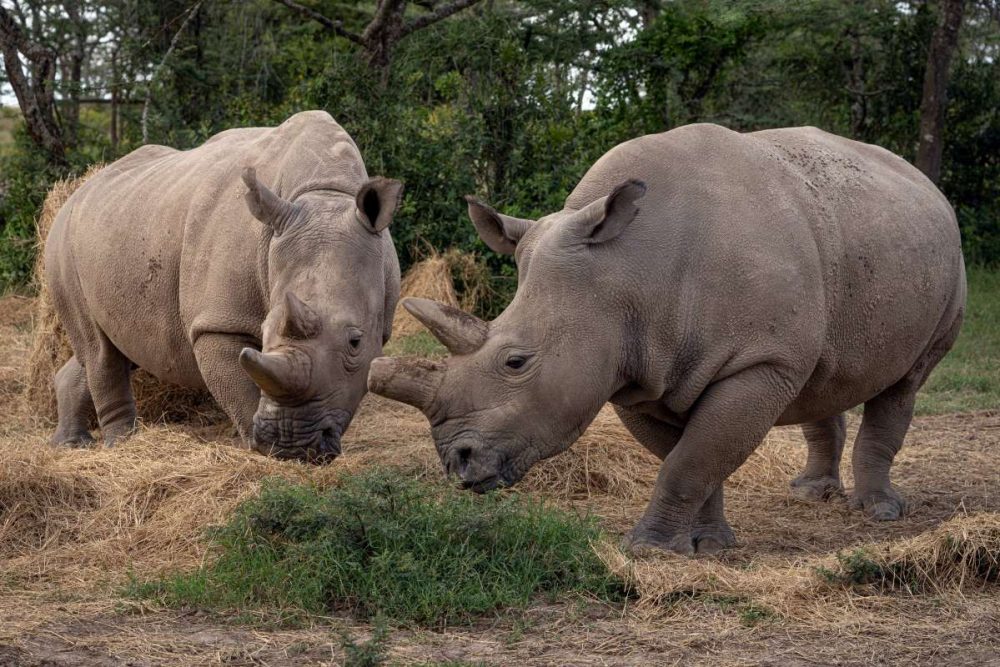[Sado Wildlife in Focus] Amid Disaster, Crested Ibis Continue to Thrive
In his first photo essay of the new year, photojournalist Fumie Oyama captures the rare crested ibis as it begins to change color amid a snowy backdrop.

このページを 日本語 で読む
The year is 2024. A major earthquake rocked the Noto region of Ishikawa Prefecture on New Year’s Day. Sado Island, close by in the Sea of Japan, also experienced strong tremors at an upper 5 intensity. A tsunami was also observed. I am relieved to report that my home and myself were unharmed.
This current photo essay showcases the resilient crested ibis. Even amid a natural disaster this winter, the birds adeptly gather food and thrive.
Preparing for Breeding Season
On January 5, the Ministry of the Environment's Sado Nature Conservation Office made an announcement. The agency had confirmed the change in color of wild crested ibis’ feathers as they enter the breeding season.
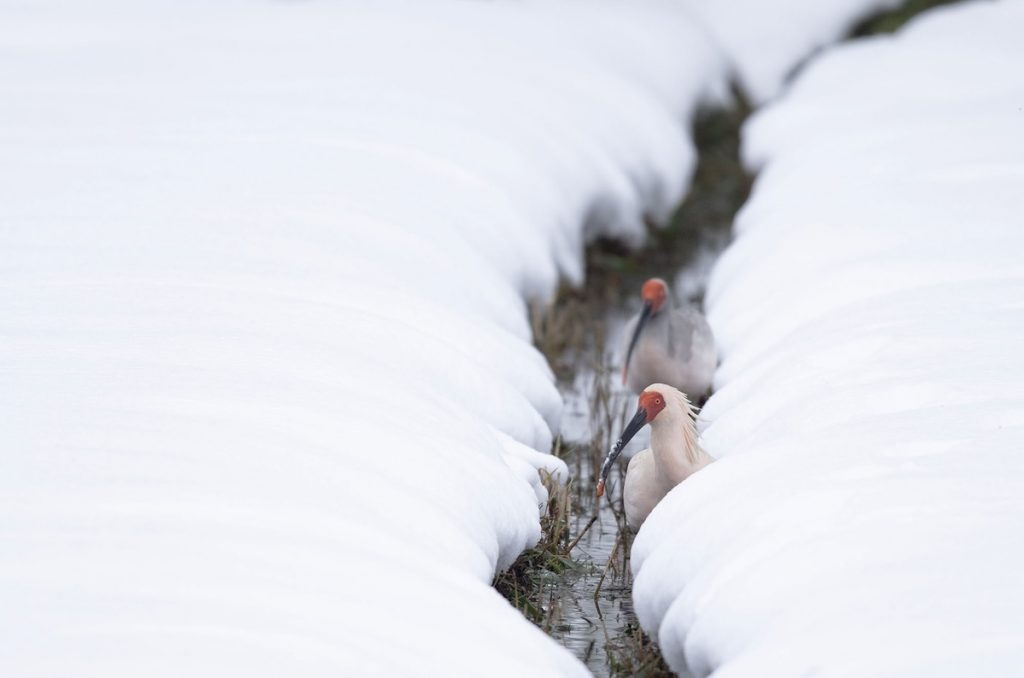
Since late December 2023, feathers around the neck of the ibis have been starting to turn gray. Currently, some birds are sporting the darker color and some have yet to do so. As the cold intensifies, the birds will gradually turn to the darker shade.
As explained in a previous photo essay, when the crested ibis enter the breeding season, they rub a black powdery substance that forms on the neck onto their bodies after bathing, giving them a gray color. This behavior is unique to crested ibis and observed in both males and females. It is believed to serve as a form of protective camouflage while nesting their eggs.
Sado's Abundant Winter
Some might assume it is difficult for the ibis to find food on the snow-covered landscape. Surprisingly, however, prey is quite abundant in winter. Small animals hibernating in unfrozen irrigation channels and rivers become a food source.
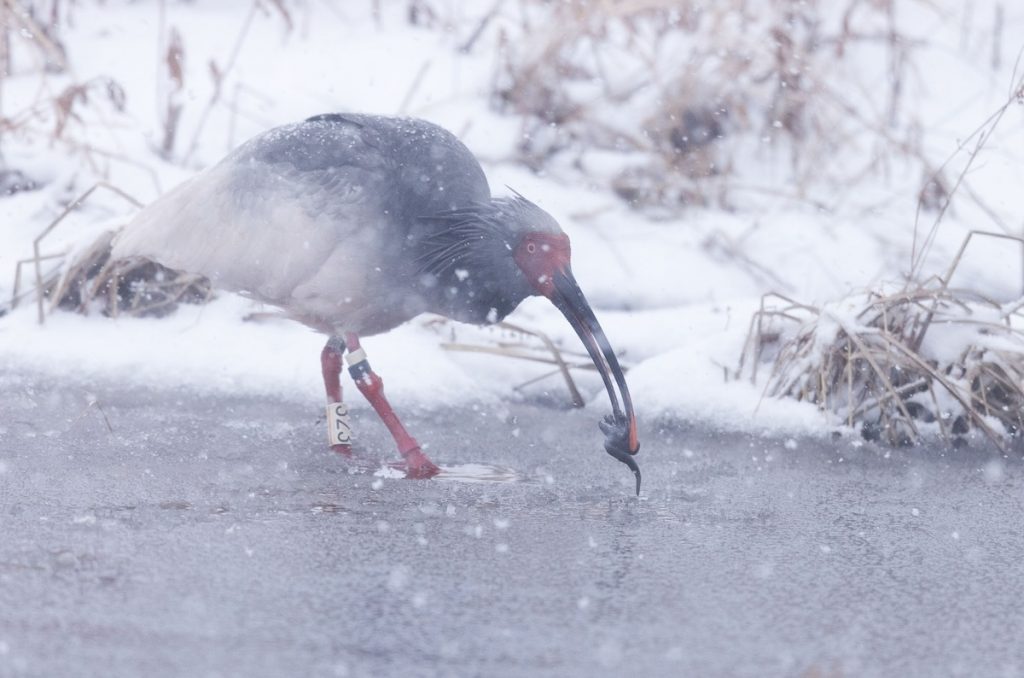
As shown in the photo, a crested ibis can capture hibernating Japanese black salamander – this one measuring 13-15 centimeters. Due to deforestation and degradation of its habitat, the salamander is designated a near-threatened species in Niigata Prefecture. The crested ibis, of course, make no concessions. To survive, the bird seizes its precious prey as it prepares for breeding.
A Symbol of Reconstruction
It has been about 20 years since the death of the last native crested ibis, named Kin, leaving the species extinct in Japan. In November of 2023, a female ibis named Yoyo, gifted from China, also passed away. That year marked a milestone in efforts to reintroduce the bird into the wild. Now, sightings have become more frequent on Honshu, both in Fukushima Prefecture and in Nagaoka City in Niigata Prefecture.
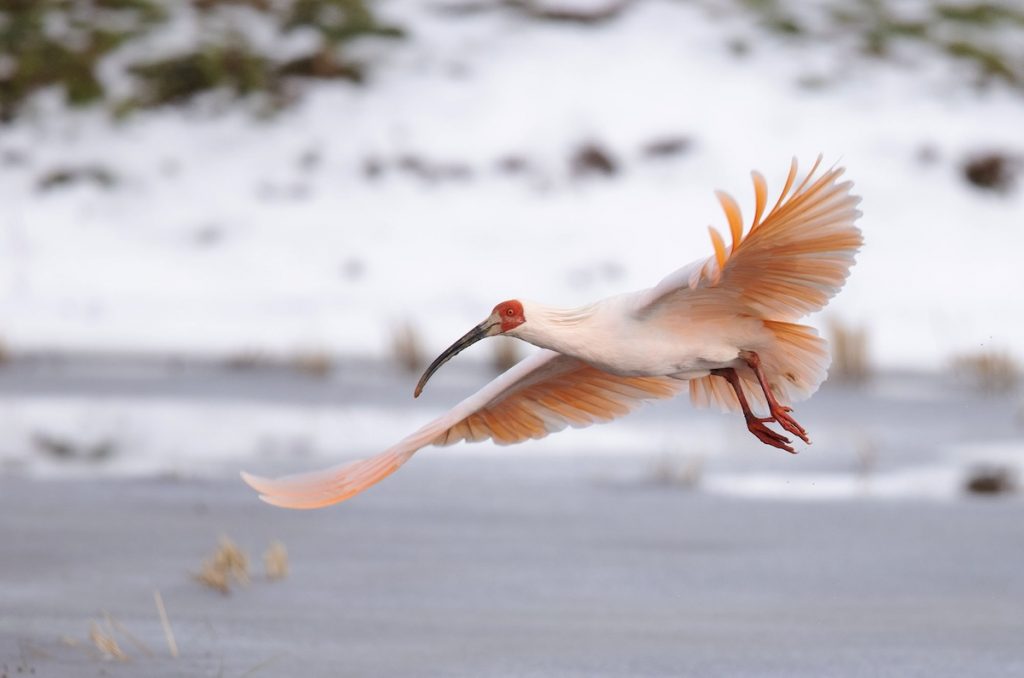
The city of Suzu in Ishikawa Prefecture which was heavily affected by the recent earthquake was another candidate location for releasing crested ibis into the wild on Honshu. While it may not be a priority for Suzu now, I hope that the crested ibis will eventually become a symbol of the city’s recovery.
Click here to read more Sado Wildlife in Focus photo essays by photojournalist Fumie Oyama.
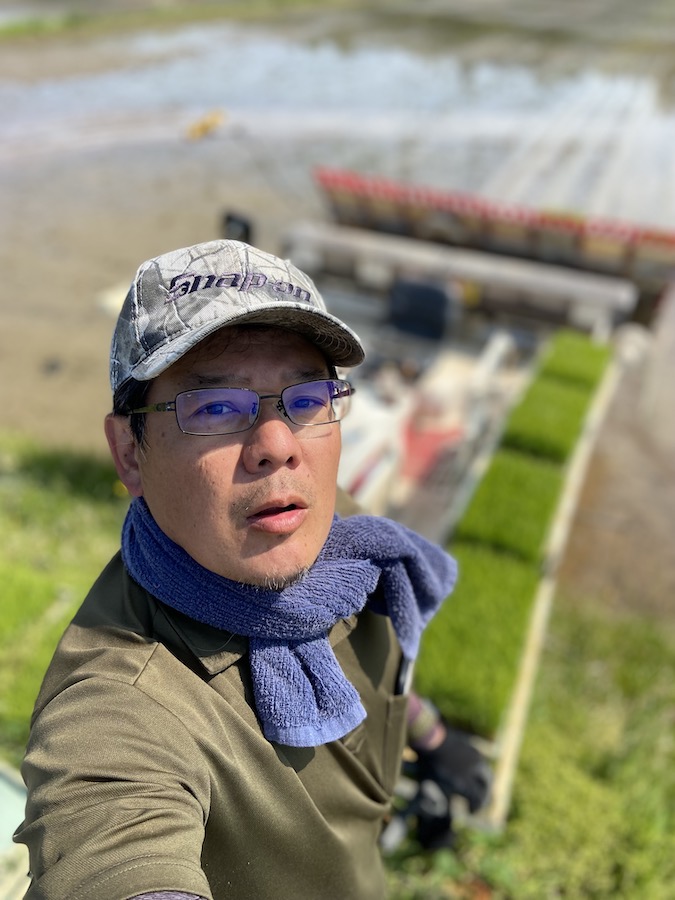
Fumie Oyama is a two-time winner of the Japan Newspaper Publishers & Editors Association Award as a photographer for the Sankei Shimbun. After covering the reintroduction of the crested ibis to the wild for 11 years, Oyama left the company in 2020 to move to Sado Island. There, he continues to photograph the ibis and other wildlife while engaging in farming. He currently promotes the charms of Sado Island as a photojournalist. Follow Fumie Oyama on Instagram.
このページを 日本語 で読む






